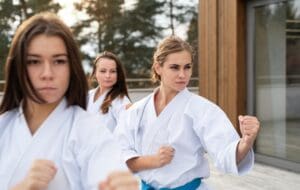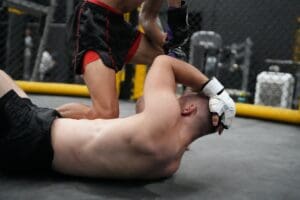Table of Contents
ToggleJiu-Jitsu Competition Rules: International Standards Every Competitor
Whether you’re new to the sport or preparing for your first tournament, understanding Brazilian Jiu-Jitsu competition rules is essential. This dynamic martial art combines technique, leverage, and strategy, and the competition scene brings it all to life under a specific set of guidelines. These rules aren’t just formalities—they define how matches are scored, what techniques are legal, and how athletes progress through the ranks. If you’re stepping onto the mat, mastering the rules ensures you’re not just competing, but competing smart.
Let’s dive into the core principles, scoring systems, and regulations of BJJ competition, especially those recognized by the International Brazilian Jiu-Jitsu Federation (IBJJF), the sport’s most authoritative body.
Match Time Limits by Belt Rank
Each belt level has a designated match duration to ensure matches are fair and appropriate for the athletes’ skill levels:
- White Belt (Adult): 5 minutes
- Blue Belt: 6 minutes
- Purple Belt: 7 minutes
- Brown Belt: 8 minutes
- Black Belt (Adult): 10 minutes
For kids’ divisions, matches usually last 2 to 4 minutes, depending on age. These time limits test conditioning and technique while minimizing the risk of injury.
IBJJF Scoring System and How Points Are Awarded
Understanding how points are awarded helps competitors strategize effectively. The IBJJF scoring system prioritizes positional dominance and controlled transitions:
- Takedown with Control (2 points): The athlete brings their opponent to the mat and maintains top control for at least 3 seconds.
- Guard Pass (3 points): Moving from the opponent’s guard to side control while stabilizing for 3 seconds.
- Mount (4 points): Gaining full mount with knees on the ground or a high mount position.
- Back Control with Hooks (4 points): Securing both legs around the opponent’s waist or locking in a body triangle.
- Sweep (2 points): Transitioning from the bottom to top control from guard or half guard.
- Knee on Belly (2 points): Placing one knee on the opponent’s torso while keeping the other leg up and maintaining control.
Advantages and Penalties
- Advantages are awarded for near-submissions or positional improvements that almost score. Two advantages do not equal one point, but may decide tied matches.
- Penalties are given for stalling, illegal grips, or unsportsmanlike conduct. Multiple penalties can lead to point deductions or even disqualification.
Legal and Illegal Techniques
Brazilian Jiu-Jitsu competition rules vary based on belt level and age to protect athletes from serious injury. Here’s a breakdown:
Common Legal Submissions by Belt Level:
- White Belts: Straight ankle locks, collar chokes, rear-naked choke, kimura, armbar
- Blue Belts and Up: All of the above plus triangle choke, omoplata, and toe holds
- Brown and Black Belts (No-Gi): Knee bars and some heel hooks (in adult no-gi divisions only)
Illegal Moves Across Divisions:
- Heel Hooks: Illegal in all gi divisions and for lower belt no-gi matches. Allowed only for advanced no-gi divisions.
- Reaping the Knee: Extremely dangerous and strictly prohibited. Involves turning the opponent’s knee inward, risking severe injury.
- Slams: You cannot slam an opponent to escape a submission—doing so leads to immediate disqualification.
- Neck Cranks and Cervical Locks: Illegal in most divisions unless otherwise specified for advanced black belts.
Belt Division Rules
Competitors are matched by belt rank, ensuring fair and safe contests. Belt-specific divisions allow the application of techniques appropriate to the athlete’s experience level. IBJJF divisions include:
- White Belt: Beginners, very limited techniques
- Blue Belt: Intermediate, some submissions allowed
- Purple/Brown/Black Belts: Advanced, broad range of legal techniques
These divisions are also categorized by age (juvenile, adult, masters, etc.) and gender, ensuring level competition.
IBJJF Weight Classes and Division Charts
Weight classes vary slightly between gi and no-gi formats. IBJJF provides official weight charts that must be followed precisely. Weigh-ins are conducted in the full gi, and competitors must meet the required weight with their gi on.
Common adult male weight classes include:
- Rooster (under 57.5kg)
- Light Feather (under 64kg)
- Feather (under 70kg)
- Light (under 76kg)
- Middle (under 82.3kg)
- Medium Heavy (under 88.3kg)
- Heavy (under 94.3kg)
- Super Heavy (under 100.5kg)
- Ultra Heavy (over 100.5kg)
Female and kids’ divisions follow a similar structure with adjusted weight limits.
Uniform and Hygiene Requirements
Gi Uniform Rules:
- Gi must be clean, of proper thickness, and made from cotton or cotton-like fabric.
- Acceptable colors: white, royal blue, or black.
- Gi tops and pants must match in color—no mix-and-match gis are allowed.
- A belt must be tied correctly, with sufficient length on each end.
No-Gi Attire:
- Rash guard covering the torso with at least 10% of the rank color.
- Board shorts without zippers or pockets, reaching mid-thigh or longer.
Hygiene Standards:
- Competitors must be clean with short nails, no open wounds, and no communicable skin conditions.
- Uniforms must be washed and odor-free.
Failure to meet these requirements can result in being barred from competition.
Referee Hand Signals and Disqualification Reasons
Referees use standardized hand signals to indicate points, advantages, penalties, and stoppages. Competitors should familiarize themselves with these signals to understand the scoring during a match.
Common reasons for disqualification include:
- Reaping the knee
- Illegal submissions
- Stalling or fleeing the mat
- Improper uniform or hygiene
- Slamming during submissions

Elevate Your Game with the Right Training
Knowing the Jiu-Jitsu Competition rules is just the start—executing your skills confidently within those Jiu-Jitsu Competition rules is what leads to victory. Whether you’re preparing for a local tournament or aiming for a spot at Worlds, proper coaching and competition-specific training make all the difference.
At Morris County Wrestling and Martial Arts in Randolph, NJ, we offer elite-level BJJ instruction with a deep understanding of IBJJF rules, tournament strategies, and tailored competition preparation.
Call (973) 713-3556 or email mcwandma@gmail.com to start training with a team that knows how to win—by the rules and on the podium.




